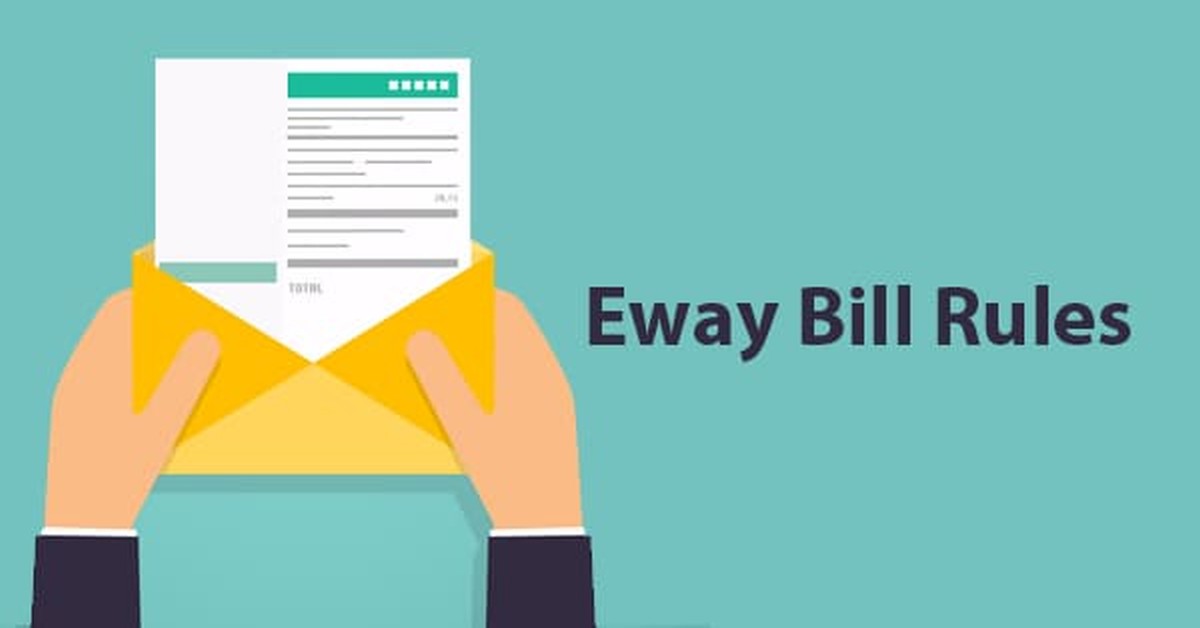What is an E-way Bill?
E-way Bill is an Electronic Way Bill for the movement of goods from one place to another which is to be generated on the E-way bill portal i.e. on ewaybillgst.gov.in. If the value of goods exceeds Rs 50,000 a GST registered person cannot transport goods in a vehicle without an E-way Bill. When an E way bill is generated, a unique E way Bill Number (EBN) is allocated and is available to the supplier, recipient, and transporter.
The validity of E-way Bill
The validity of the e-way bill depends on the distance to be traveled by the goods. For a distance of less than 100 Km, the e-way bill will be valid for a day from the relevant date. For every 100 Km thereafter, the validity will be an additional one day from the relevant date. The “relevant date” shall mean the date on which the e-way bill has been generated.

Who should generate an E Way Bill?
- Registered Person – E-way bill must be generated when there is an inter-state movement of goods of more than Rs 50,000 (Including GST) in value to or from a registered person. For an intra-state movement of goods, an E-way bill must be generated for the movement of goods of more than the amount as notified by the state governments. For example amount notified for Delhi is Rs 1,00,000, For Haryana Rs 50,000 and for Utter Pradesh Rs 50,000. A registered person or a transporter may choose to generate and carry E way bill even if the value of goods is less than the above limits.
- Unregistered Persons – Where a supply is made by an unregistered person to a registered person, the receiver will have to ensure all the compliances are met as if they were the supplier.
- Transporter – Transporters carrying goods by road, air, rail, etc. also need to generate E Way Bill if the supplier has not generated an E Way Bill.
Documents required to generate E Way Bill
In order to generate an E way Bill, a consigner should be prepared with the following details:
- Invoice/Delivery Challan/Bill of Supply.
- For transportation by road – Vehicle number/Transporter ID, Part B of E-way bill has to be filed.
- For transportation by rail, air, or ship – Transporter ID, Transport document number, and date on the document.
Blocking of E-way bill facility
- E way Bill generation can be blocked for taxpayers who haven’t filed their GSTR3B returns for the previous two consecutive months.
- Only when a taxpayer files GSTR3B, the e-way bills will get unblocked on a subsequent day.
Consequences of not generating E-way bill or wrong E-way bill
- Detention or seizer of the vehicle during movement.
- Detention or seizer of Goods during the movement.
- Confiscation of vehicle or goods on nonpayment of the penalty within 7 days of detention.
- Sale of vehicle or goods by the officials after confiscation.
- The imposition of penalty of Rs. 10,000 or equivalent amount of tax of goods in transit, whichever is higher.
Common Errors made by businesses on the E way bill Portal
- Issuance of a single E way Bill against multiple invoices.
- Furnishing Vehicle numbers in an invalid format.
- Improper use of bulk generation facility.
- Generations of e-way bills through incorrect user ID’s.
- Inability to track the validity period of e-way bills.
- Not furnishing a transporter ID.
- Inability to maintain a record of e-way bills generated by the counterparty.
- Incorrect document details while generating e-way bills.
- The difference in total invoice value in tax invoice and Eway bill.
How to Release goods after detention
- On detention of vehicle and goods, the officer shall issue the following notices and orders:
- MOV-06- Order of detention u/s 129(1).
- MOV-07- Notice u/s 129 for tax and penalty.
- On receipt of the above notice and order, a taxpayer needs to pay tax and penalty as specified in MOV-07. After the payment is being made, the concerned officer shall issue MOV-05 to release the vehicle and goods.
What after Release of goods
- The taxpayer can file an appeal against the order received in the MOV-09 form.
- An appeal shall be filed at the jurisdiction at which the vehicle and goods were detained.
- Tax and penalty paid can be refunded to the taxpayer considering the merit of the case.
Important points to remember
- An appeal shall be filed within 3 months from the order in MOV09. The taxpayer should always collect the original copy of MOV forms from the officer when the vehicle is being released.
- Various pronouncements by tribunals, high courts are in the favor of the taxpayer which overlooks the procedural lapses.
- Department has issued a Circular 64/38/2018 dated 14th September 2018 for non-imposition of penalty in case of minor discrepancies.





 CAclubindia
CAclubindia

